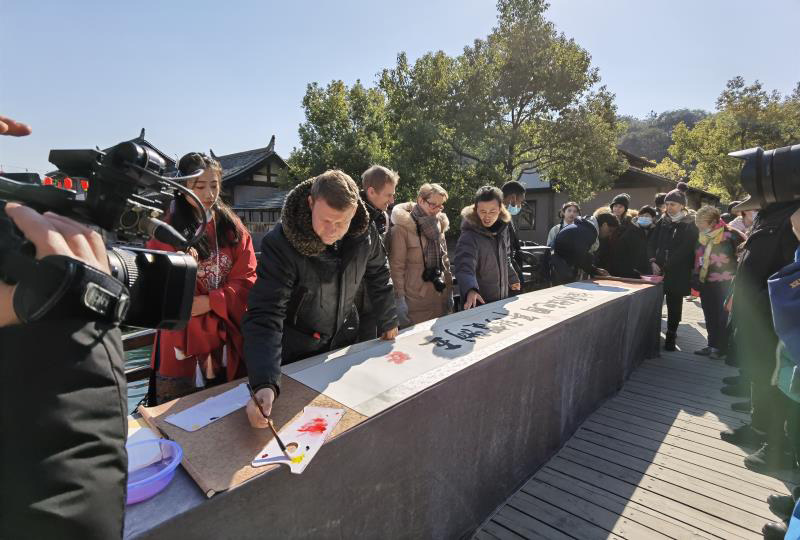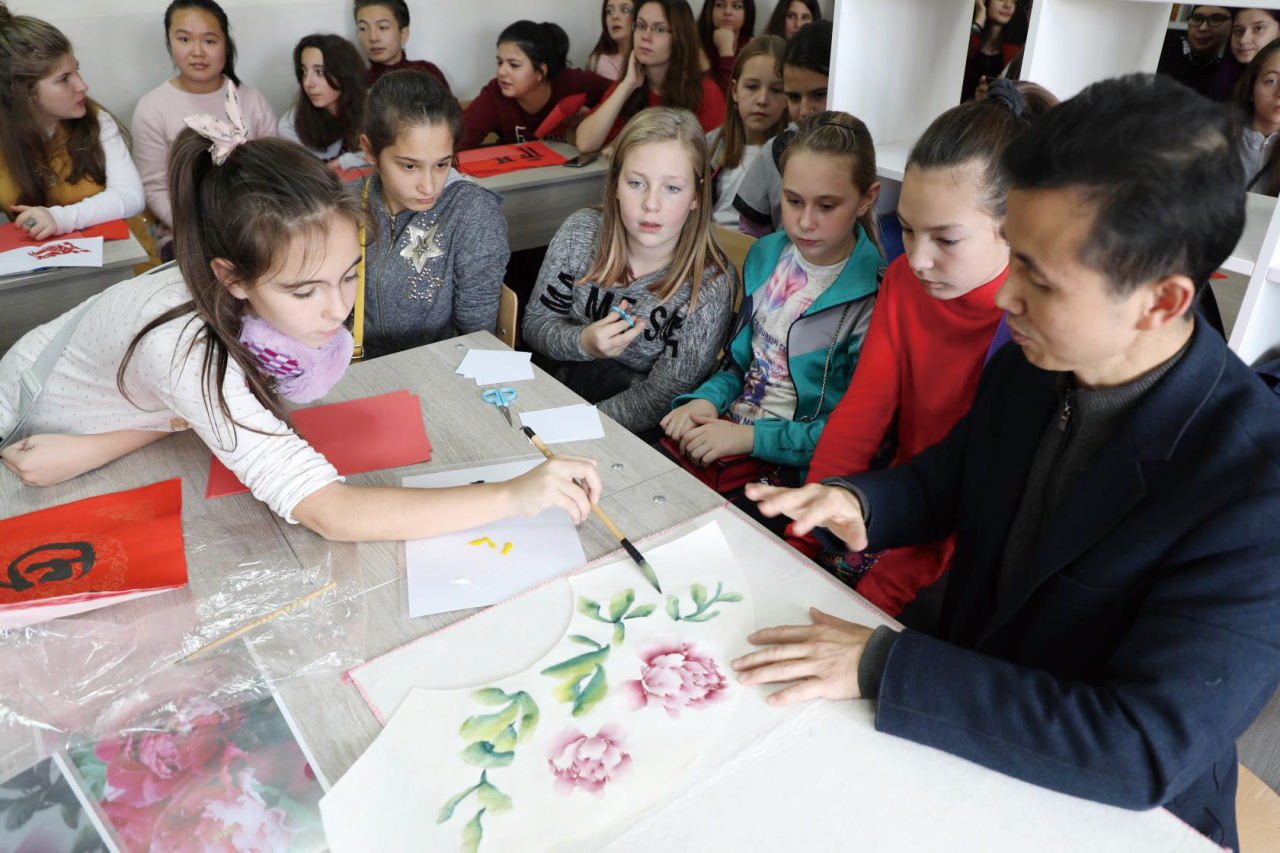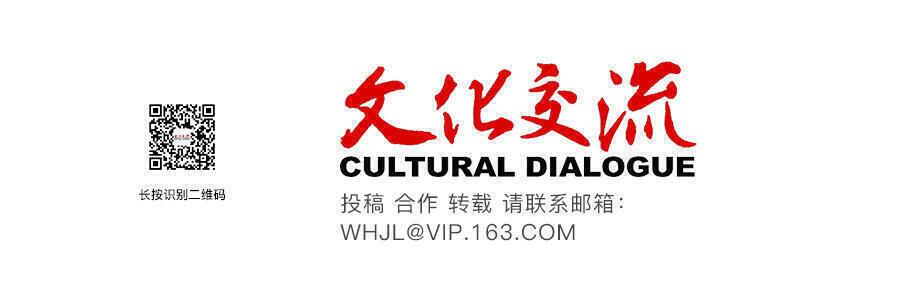In October 2012, I gave up my job as an English teacher for the last 22 years to establish the Ningbo Red Peony Academy of Traditional Chinese Painting & Calligraphy in the library of Ningbo University (Yinzhou district) from scratch. I intended to build it into an artistic platform of culture and education, combining tradition and modernity, and connecting the East and the West. For foreigners who visit Ningbo or choose to live, study and work here, it is a window to understand Chinese culture in depth through Chinese painting and calligraphy.

The author travels to Lanting or the Orchid Pavilion with his international friends and introduces stories of Chinese calligraphy behind the place on December 4, 2020
In the class, I use English to teach Chinese painting and calligraphy to my students throughout, and I start by teaching them how to draw a red peony. With poetic languages, I encourage them to express their feelings through painting and open their heart to the colorful, friendly and emotional world of Chinese painting and calligraphy.
Those foreigners who fall in love with drawing red peonies first are turning their passion into other subjects in Chinese painting, such as plum, orchids, bamboo, chrysanthemums, and Chinese calligraphy. Some of them have even developed a strong interest in Chinese literature and history.
After studying Chinese calligraphy and painting, Jace, a student at a Canadian art school, left a message in Jiang’s notebook before returning home: “Chinese calligraphy and painting are excellent artistic vehicles for expressing inner thoughts, emotions and ideas. I always look forward to your calligraphy and painting classes because, with your art of calligraphy and painting, you have led me to inner peace and meaning in life. The time I have spent in classes with you is a treasure that I will always cherish in my life. Your passion for art and your kindness will always be my inspiration.”
Gabi, a Bolivian teacher, said in an interview: “Thanks to the ‘Red Peony’ for building a bridge of friendship, for sharing China’s wonderful art and culture with the rest of the world. Learning Chinese painting is easier than learning Chinese, and it has brought me to China. Chinese painting and calligraphy has become an indispensable part of my life.”
We have been focusing on an international style of teaching Chinese painting. In addition to giving classroom courses in a traditional way, we have also made full use of our own advantages, contacting various NGOs who help us bring our lessons on Chinese culture to different communities. We have carried out such cultural activities of different scales for more than 150 times, which have been participated by over 5,000 foreigners.
This cultural communication model of “Red Peony” has won the love and support from people all over the world, under the influence of which a unique group of international friends has been gradually formed for the purpose of promoting Chinese culture. By teaching in classrooms, organizing activities, making videos, textbooks, news stories and so on, they have turned themselves into friendly messengers for introducing Chinese culture to the rest of the world. Gillian, an Australian lady, is one of them. After learning Chinese painting for several years, she has now become a teacher herself and helped develop the international syllabus, promoting the art of Chinese painting and calligraphy.
International friends who have studied Chinese culture in Ningbo and have been attracted to the “Red Peony” have invited me to give lectures overseas so that local people can have the opportunity to learn the excellent traditional Chinese culture as well. From January 11 to February 20 in 2016, I was invited by the Lakeside Arts Center of the University of Nottingham to do a 40-day international teaching project of Chinese calligraphy and painting, which was an important part of the “Happy Spring Festival” event in the UK. The feedbacks were quite positive. “We are delighted to meet the charming and talented artist Jiang Hongsheng. His exquisite works of art have this kind of peace and tranquility, which goes out to the nature and to people from different countries,” wrote Cressida and Julian, a Nottingham couple, in their message after they enjoyed my exhibition in the Lakeside Arts Center.
Sofia Nazar-chadwick, Director of Human Resources at the Lakeside Arts Center, said in an interview with China Daily: “If you ask most British people, they will tell you, ‘I can’t paint with a brush’. But look at what these students have created, it’s absolutely unimaginable! Jiang is able to make people do things they never imagined they could do.”

The author teaches local students to draw peonies in Bulgaria on November 23, 2017
During the period for the Chinese culture promotion, we have been organizing and planning the “Red Series” patriotic activities together with our international friends. For example, on the eve of the Chinese National Day in 2015, we joined hands with Ningbo University to plan the Ningbo International Celebration, where Ningbo-based international friends coming from 66 countries painted 66 peonies with different shapes and colors on a 9.9-meter-long scroll. The peony symbolizes openness, love, and happiness and beauty, therefore it is a perfect Chinese cultural symbol to share with peoples from all over the world.
In order to meet the spiritual and cultural needs of rural people and improve international cultural exchange, Ningbo Jiulonghu Lake Red Peony International House has invited the ambassador of China-Central and Eastern European Countries (CEEC) Expo, a Latvian lady named Helena to paint peonies with local people every Saturday since July 10, 2021.
“I have been in China for many years and I am also a Ningbo daughter-in-law. I like Chinese culture very much, and I hope to make my own contribution to Ningbo’s foreign cultural exchange.” Helena told the reporter.
Since March this year, Red Peony has carried out more than 30 international cultural exchange activities, successfully making international friends better understand the beautiful Chinese culture and also allowing the Chinese rural culture to go global.
(written by Jiang Hongsheng, the Founder and President of Ningbo Red Peony Academy of Traditional Chinese Painting & Calligraphy)
Editor:Huang Yan
